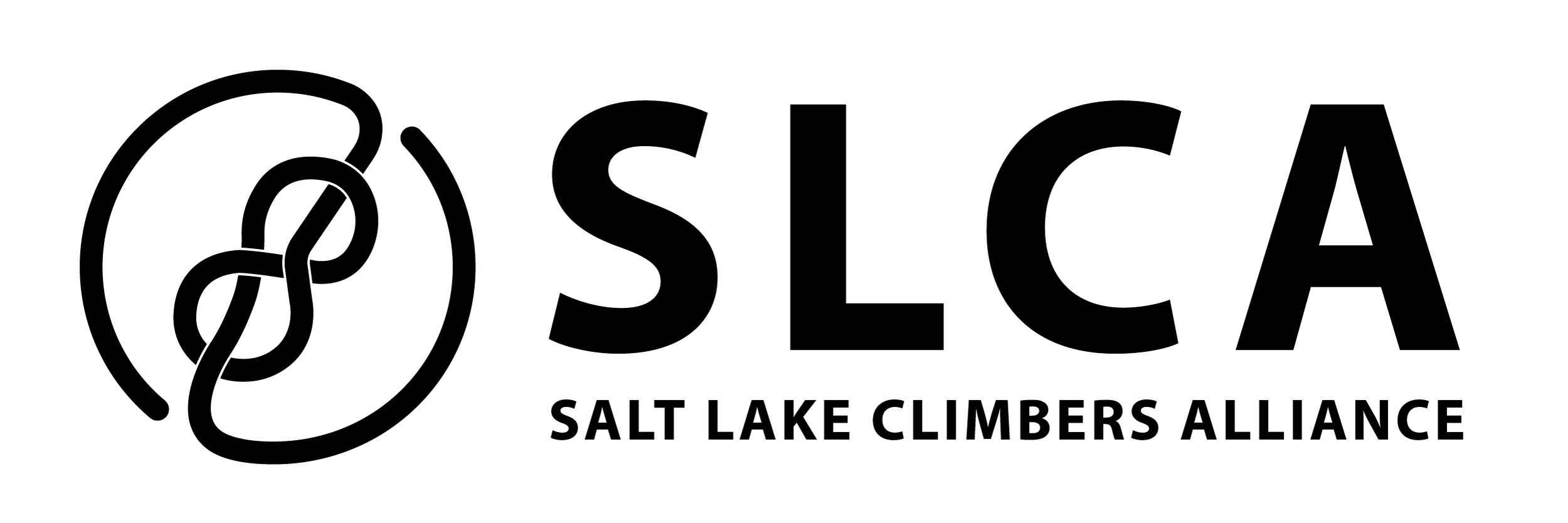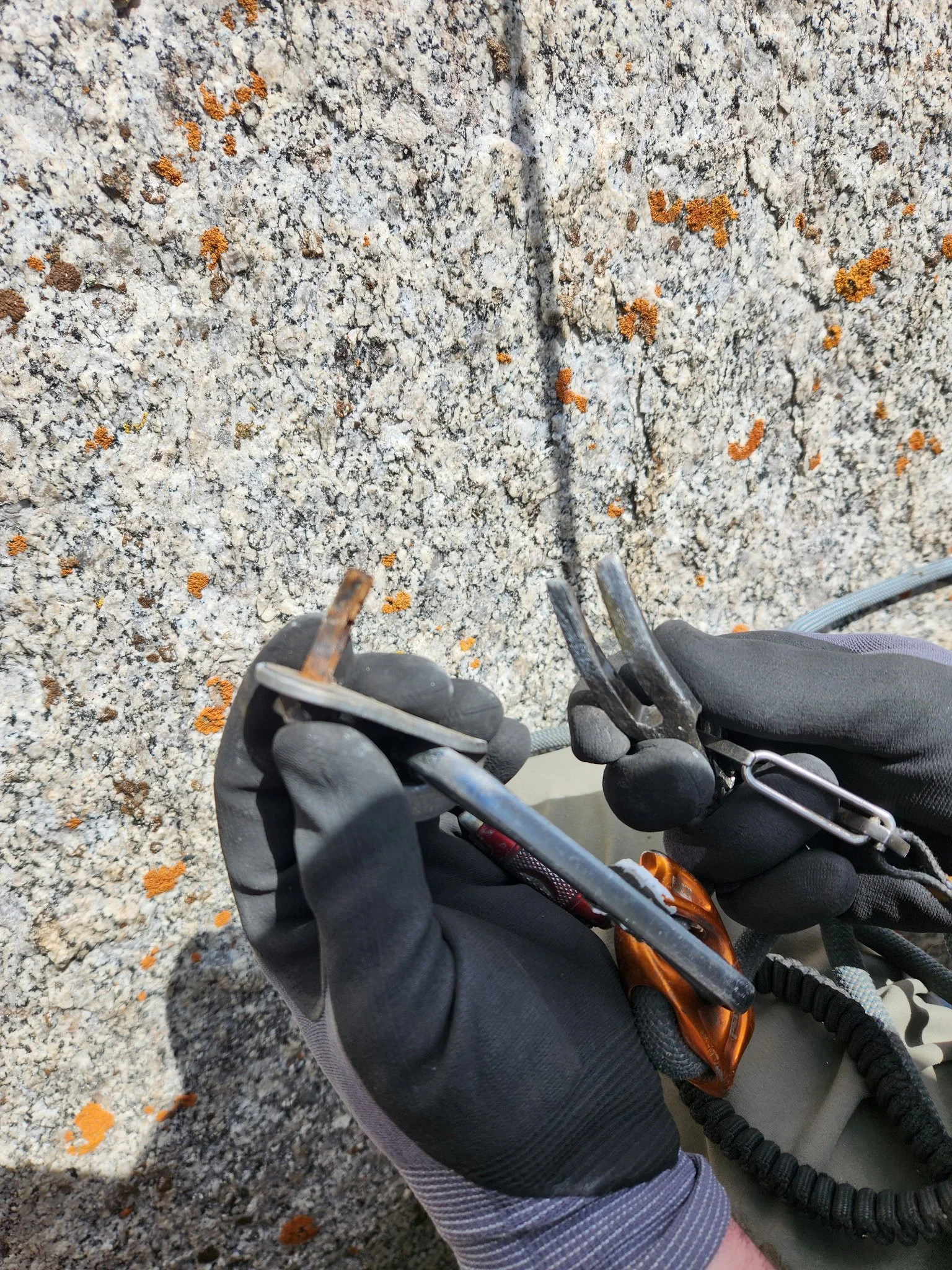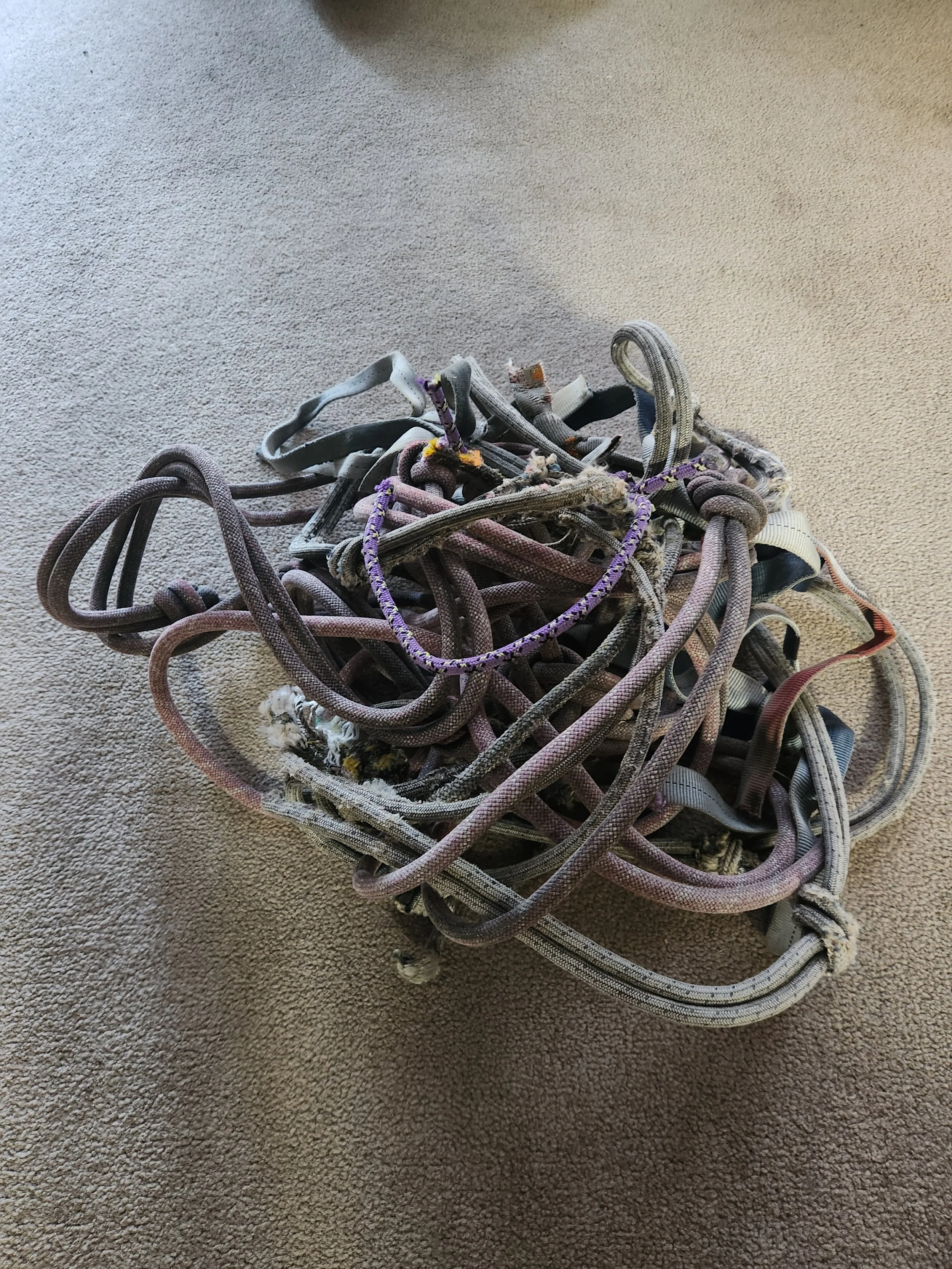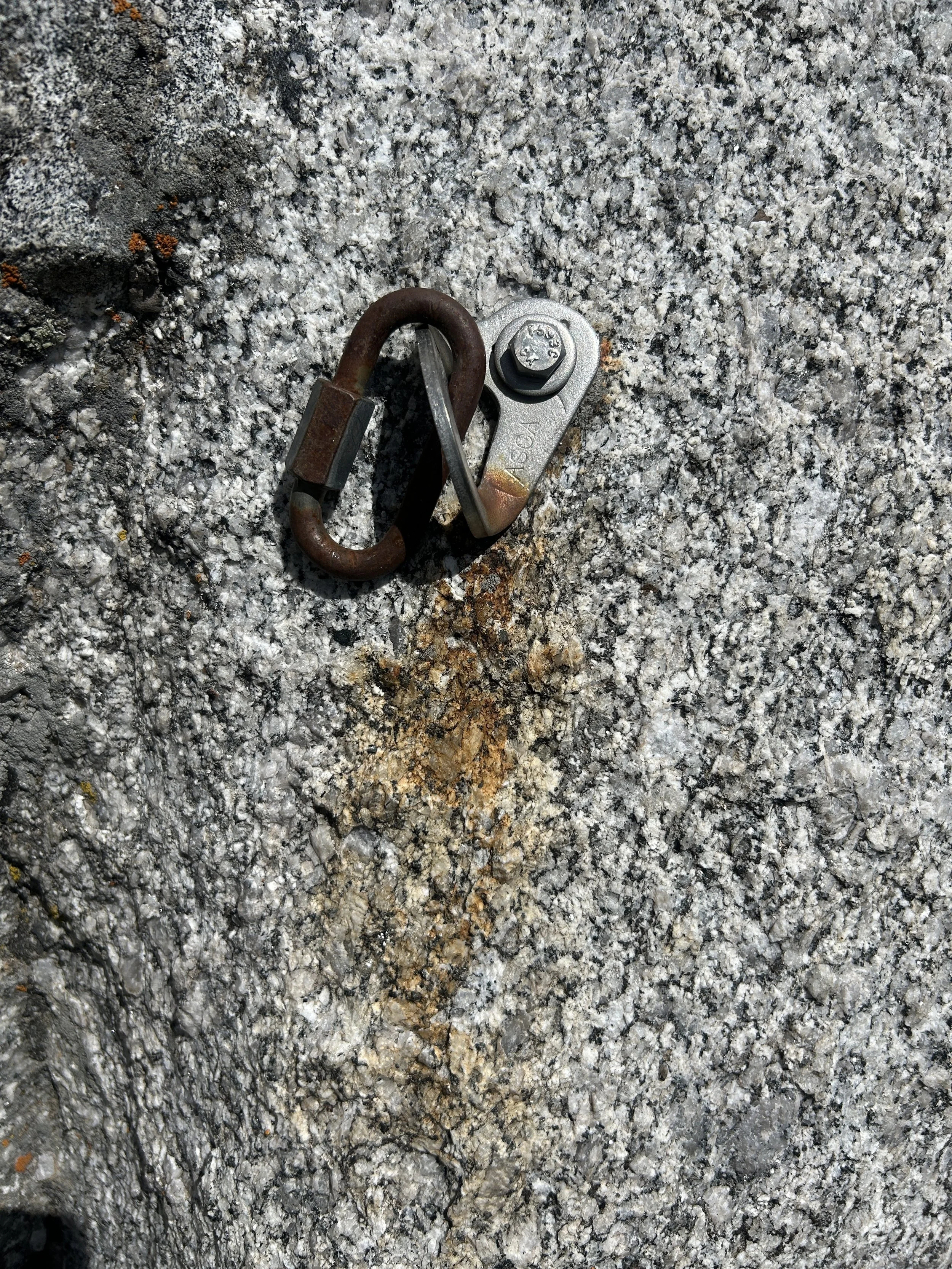Anchor Maintenance: The Thumb in Little Cottonwood Canyon
Over the course of three days—May 7th to May 9th—the anchor maintenance crew headed up to The Thumb in Little Cottonwood Canyon to replace aging fixed anchors. Originally planned as a five-day project, the work was shortened due to a two-day weather delay.
Despite the condensed timeline, the crew was able to visit and perform maintenance on several well-traveled routes. We also collaborated with a number of local climbers throughout the project.
Please Note: The SLCA has a responsibility to maintain and update fixed anchors using high-quality equipment. This includes the removal of slings and hardware from natural features such as trees, bushes, and rocks. As the leaseholder of the Gate Buttress, we also have a duty to protect the resource by minimizing impacts to vegetation, which includes the removal of fixed anchors from trees and other living features.
Below is a comprehensive list of the work completed:
Standard Thumb - Pitches 1-2
The anchors on top of pitches 1 and 2 were updated.
The anchor on pitch 2 (photo below) was originally destroyed by rockfall. It was relocated up and right to a natural stance.
This new placement is better protected from rockfall and avoids the rope running over loose rock inside the chimney.
The anchor configuration is designed as a low-profile emergency rappel.
S-Crack - Bolts Replaced: 10
The anchors on top of pitch 2 (5.8 chimney) and pitch 4 (5.8 crack to Lunch Ledge) were replaced.
Pitch 3: The A0 (or 5.12a) bolts were restored. The fixed rope previously used to "batman" up to the S-Crack was removed.
The A0 bolt used to pendulum into the S-Crack was replaced.
A bolt on pitch 4 was also replaced.
S-Direct - Bolts Replaced: 7
All lead bolts were replaced with glue-ins.
All anchors were updated with at least one glue-in bolt and rappel rings.
Pitch 8 tat/sling anchor was removed and replaced to a better, higher stance. This is to:
Facilitate an emergency decent.
Remove unattainable fixed anchors of vegetation.
S-Direct var. - Bolts Replaced: 2
All lead bolts were replaced with glue-ins.
Nob Job - Bolts Replaced: 8
All but one bolt was replaced with glue-ins.
All anchors were updated with at least one glue-in bolt and rappel rings.
Coyne Crack - Bolts Replaced: 2
Belay anchor replaced with glue-ins and stainless steel hardware.
Tree anchor was removed.
Flabbergaster - Bolts Replaced: 6
All lead bolts were replaced.
S-Matrix - Bolts Replaced: 1
Removed two bolts and replaced one at pitch 1 anchor.
Thumb Summit - Bolts Replaced: 4
One lead bolt at the “mantel” replaced.
Two anchors were replaced on the summit: Robbins Crack and The Summit Pitch (East Face).
Thumb Summit Descent
All anchors on the walk-off / descent from The Thumb summit were replaced.
Rap #2 (after the summit): stainless steel bolts and chain was added, slings on dead tree were removed.
Rap #3 stainless steel bolts and chain was added, slings removed.
Rap #4 stainless steel bolts and chain was added, slings on a tree were removed.
Rappel stations (From Lunch Ledge)
The standard rappel from Lunch Ledge was replaced.
Lower rappel stations were updated with stainless steel hardware.
The Take Aways
Routes like Nob Job and S-Direct last received bolt replacements 15–20 years ago. Unfortunately, those bolts were mixed-metal (plated steel bolts with stainless steel hangers) and 3/8" x 2" sleeve bolts. Due to the significant runoff in the area, these bolts were in poor condition—a reminder to always use stainless steel hardware.
Several anchors appeared to have previously received only partial updates. In many cases, older hardware—such as rusty quick links and chain was recycled onto otherwise new stainless steel bolts. This contaminates the stainless hardware through galvanic corrosion and often forces us to replace good bolts due to rusted hangers caused by mixed metals.
Rock climbing is an inherently dangerous activity and we encourage anyone who participates to obtain the appropriate education and training in order to minimize accidents. We also encourage participants to consult resources including but not limited to guiding outfitters, SAR, Utah Avalanche Center, ranger stations, and weather reports. Nevertheless and although tragic, accidents can happen even when the participants have the proper training and have consulted authorities on conditions. Participants in outdoor climbing are assuming a risk, just as they do in skiing, mountain biking, kayaking, or other outdoor activities. Anchors once maintained by the SLCA are not guaranteed to be in the same state or condition as when they were maintained.

















